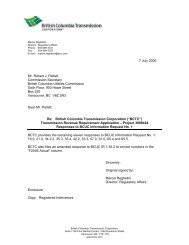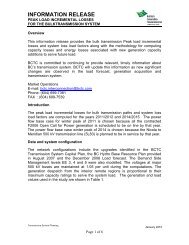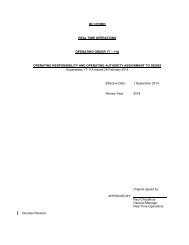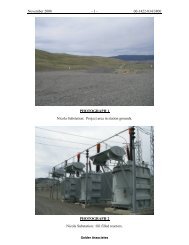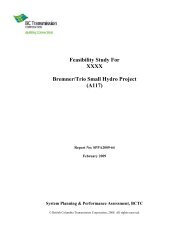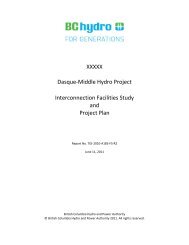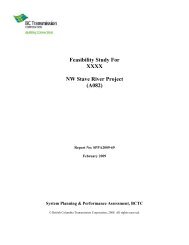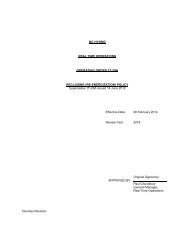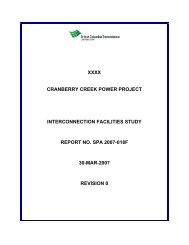Evidence on the Adequacy of First Nations Consultation - BC Hydro ...
Evidence on the Adequacy of First Nations Consultation - BC Hydro ...
Evidence on the Adequacy of First Nations Consultation - BC Hydro ...
Create successful ePaper yourself
Turn your PDF publications into a flip-book with our unique Google optimized e-Paper software.
An important part <strong>of</strong> Teit’s analytical technique was to trace <strong>the</strong> occurrence <strong>of</strong> Salish place names as<br />
determinants <strong>of</strong> <strong>the</strong>ir territory, and use this to infer traditi<strong>on</strong>al Salishan occupati<strong>on</strong> <strong>of</strong> those areas [pp.<br />
209-221]. His findings with respect to <strong>the</strong> study area are firmly based in <strong>the</strong> post-c<strong>on</strong>tact era, much<br />
<strong>of</strong> it <strong>the</strong> outgrowth <strong>of</strong> <strong>the</strong> Kinbasket settlement at Windermere Lakes. As such <strong>the</strong>y ignore <strong>the</strong> much<br />
older occupati<strong>on</strong> <strong>of</strong> this area by <strong>the</strong> Ktunaxa who, after permitting <strong>the</strong> settlement <strong>of</strong> <strong>the</strong> Kinbaskets in<br />
<strong>the</strong> mid 1800s, shared this area with <strong>the</strong>m 71 .<br />
Note also <strong>the</strong> inclusi<strong>on</strong> <strong>of</strong> <strong>the</strong> Arrow Lakes area as Shuswap speaking despite hard historical evidence<br />
that Ktunaxa, Sinixt and Okanagan people were also using <strong>the</strong> area. It appears that Teit’s map should<br />
be simply c<strong>on</strong>strued as a map where Shuswap Salish could be heard during <strong>the</strong> lifetime <strong>of</strong> his<br />
informants and not a meaningful delineati<strong>on</strong> <strong>of</strong> traditi<strong>on</strong>al territorial boundaries at or predating <strong>the</strong><br />
time <strong>of</strong> c<strong>on</strong>tact.<br />
An interesting c<strong>on</strong>trast to Teit is afforded by <strong>the</strong> language based assessments made by <strong>the</strong><br />
ethnographer Verne Ray <strong>of</strong> <strong>the</strong> traditi<strong>on</strong>al territory <strong>of</strong> <strong>the</strong> Sinixt people, now largely ga<strong>the</strong>red in <strong>the</strong><br />
Colville, Washingt<strong>on</strong> area. His 1936 map [Figure 7] suggests that Sinixt territory [vertical cross<br />
hatching] included all <strong>of</strong> <strong>the</strong> Big Bend area, extending up <strong>the</strong> Columbia to <strong>the</strong> vicinity <strong>of</strong> Golden.<br />
Figure 7. Traditi<strong>on</strong>al territories <strong>of</strong> <strong>the</strong> Plateau Indians, by Ray [detail, from Turnbull 72 ]. “S”, “O”<br />
and “C” indicate Salish, Okanagan and Colville peoples respectively.<br />
71 As seen for example, in Shelagh Dehart’s book<br />
72 Turnbull, Charles J., (1977).<br />
34<br />
Page 178 <strong>of</strong> 200






